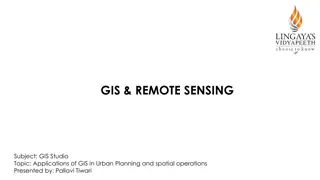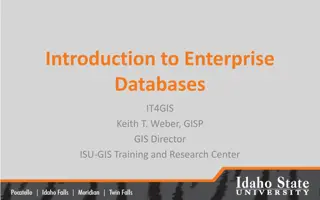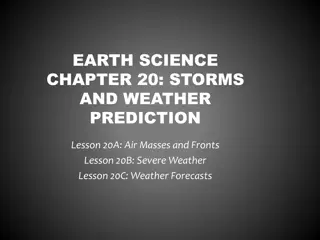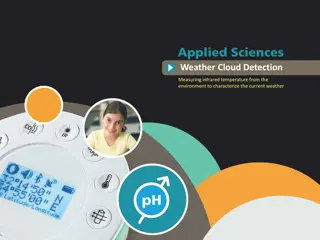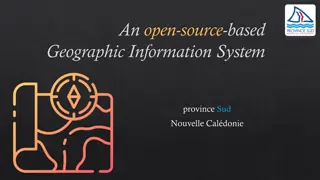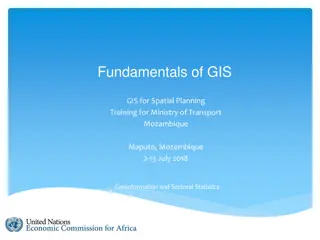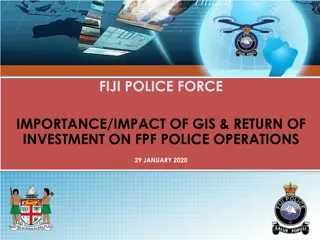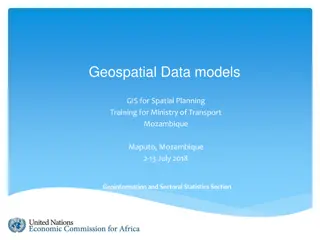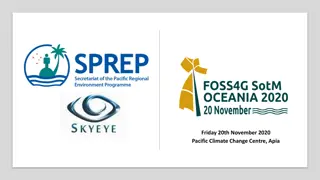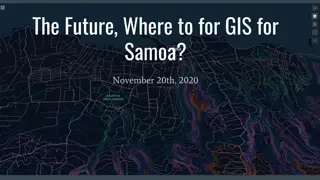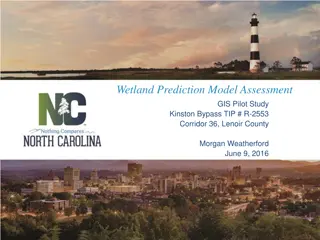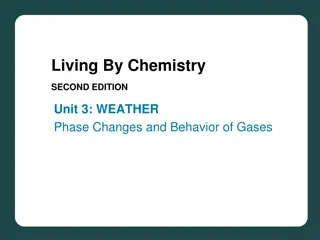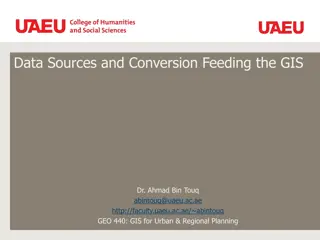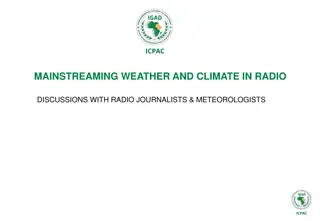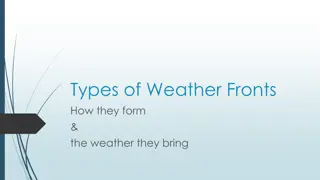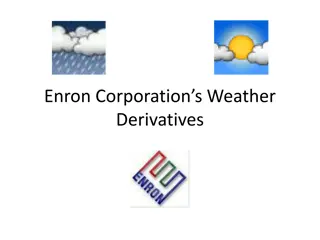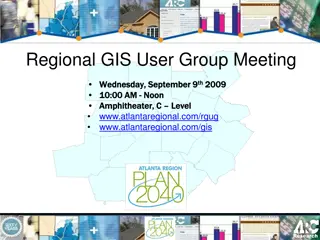
Understanding GIS in Weather Systems
Explore the role of Geographic Information Systems (GIS) in weather monitoring and analysis. Learn about geo-referencing data, qualitative information integration, climate patterns modeling, and GIS analysis for weather forecasting. Join Professor Dr. Yuji Murayama and Teaching Assistant Niloofar Haji Mirza Aghasi in this insightful journey.
Download Presentation

Please find below an Image/Link to download the presentation.
The content on the website is provided AS IS for your information and personal use only. It may not be sold, licensed, or shared on other websites without obtaining consent from the author. If you encounter any issues during the download, it is possible that the publisher has removed the file from their server.
You are allowed to download the files provided on this website for personal or commercial use, subject to the condition that they are used lawfully. All files are the property of their respective owners.
The content on the website is provided AS IS for your information and personal use only. It may not be sold, licensed, or shared on other websites without obtaining consent from the author.
E N D
Presentation Transcript
GIS in Weather Instructor: Professor, Dr Yuji Murayama Teaching Assistant: Niloofar Haji Mirza Aghasi
Geographic Information Systems Geographical Information Systems (GIS) are a special class of information systems that keep track not only of events, activities, and things, but also of where these events, activities, and things happen or exist. Source: Longley et al (2005) Geographic Information Systems and Science. 2nd Edition. John Wiley and Sons Ltd. RGS-IBG Online CPD course in GIS Introduction to GIS, Royal Geography Society with IBG.
Geo-referencing data Geo-reference means to associate something with location in physical space. Geo-referenced data is essential in GIS, since all data in GIS must be linked to the earth s surface. Data capture Scanning: all of the maps converted into raster data Digitizing: individual features selected from the map as dots, lines or polygons Geo-referencing Initial scanning, digitizing gives the coordinates in inches from bottom left corner of the digitizer / scanner Real-world co-ordinates are set up for four-registration periods on the seized data These are applied to convince the entire map onto a real-world coordinate system
Qualitative data in a GIS: conceptual integration Content-specific; snap shots in time. Visualization of information Geographical referencing (XY, place name, geographic identifier) allows for mapping data together to reach a common interpretation Methodological differences (concepts and study objects) may create challenges Source: Climate change and Urban Environment Strategy; Antoaneta Yoveva, architect, Director of Sustainable World Foundation (SWF), Bulgaria Perceptions of climate change From S. McNeeley
Climate Information Used extensively by weather forecasters, these systems attempt to model climate patterns. This includes air current, precipitation, temperature, and dew point information. Source: http://www.ocs.orst.edu/prism/prism_new.html
GIS Analysis and Integration Coastal Watches/Warnings and Forecast for Storm This approximate representation of coastal areas under a hurricane warning (red), hurricane watch (pink), tropical storm warning (blue) and tropical storm watch (yellow). The orange circle indicates the current position of the center of the tropical cyclone. The black line, when selected, and dots show the National Hurricane (NHC) forecast track of the center at the times indicated. graph shows an Center Source: www.nhc.noaa.gov
Tropical Storm Force Wind Speed Probabilities These probabilities of sustained (1- minute average) surface wind speeds equal to or exceeding 34 kt (39 mph). These wind speed probability graphics are based on the official National Hurricane Center (NHC) track, intensity, and forecasts, and on NHC forecast error statistics forecast variables . graphics show wind radii for those Source: http://www.nhc.noaa.gov/refresh/graphics_at4+shtml/203305.shtml?tswind120#wcontents
Hurricane and Tropical Storm Watch/Warning Breakpoints Coastal areas placed under tropical storm and hurricane watches and warnings are identified through the use of "breakpoints." A tropical cyclone breakpoint is defined as an agreed upon coastal location that can be chosen as one of two specific end points or designated places between which a tropical storm/hurricane watch/warning is in effect. Source: http://www.nhc.noaa.gov/breakpoints/
GIS in Temperature This is a map that shows the average temperature in Russia annually. This map does a great job illustrating the difference in climate throughout Russia. map is to understand what the actual temperatures are. You can compare which parts of Russia are warmer and colder simply by knowing Blue is cold and Red is warm. The average Source: http://maps.unomaha.edu/peterson/funda/MapLinks/Russia.htm
GIS in Rainfall This map shows the rainfall in categories in 2011 by university of Hawai i at Manoa. The categories were set based on the natural breaks in the rainfall values for each extent, with the minimum and values in corresponding minimum and values shown in the map extent. maximum the legend to maximum the Source: http://rainfall.geography.hawaii.edu/downloads.html
NWS GIS Radar Webpages GIS Radar images and warning polygons are displayed, time looped and downloaded to a GIS 1 Minute Polygon Warning updates this can be Keith Stellman, NWS Source: http://radar.weather.gov
GIS and Climate Data Online (CDO) Simple access to NCDC data archives while integrating new and informative products US Drought Indices Rich Baldwin, NCDC http://gis.ncdc.noaa.gov, http://www.ncdc.noaa.gov http://cdo.ncdc.noaa.gov
In Summary GIS is a useful tool to analyze, understand and solve problems for any location matters including weather or related subjects. In weather study, you can switch many city information and data together speedy and easily. GIS users in weather, can analyze current and predict future weather situation. GIS usage is so wide and it can be applied in many weather matters.
References Climate change and Urban Environment Strategy; Antoaneta Yoveva, architect, Director of Sustainable World Foundation (SWF), Bulgaria GIS in Weather and Society; Olga Wilhelmi, Institute for the Study of Society and Environment , National Center for Atmospheric Research. Geo-referenced data and DLI aggregate data sources, Chuck Humphrey. GIS Fundimentals, Dr. Ronald Briggs, The University of Texas at Dallas, Program in Geospatial Information Sciences National Hurricane Center, National oceanic and atmospheric administration. Map Gallery of Russia: http://maps.unomaha.edu/peterson/funda/MapLinks/Russia.htm




